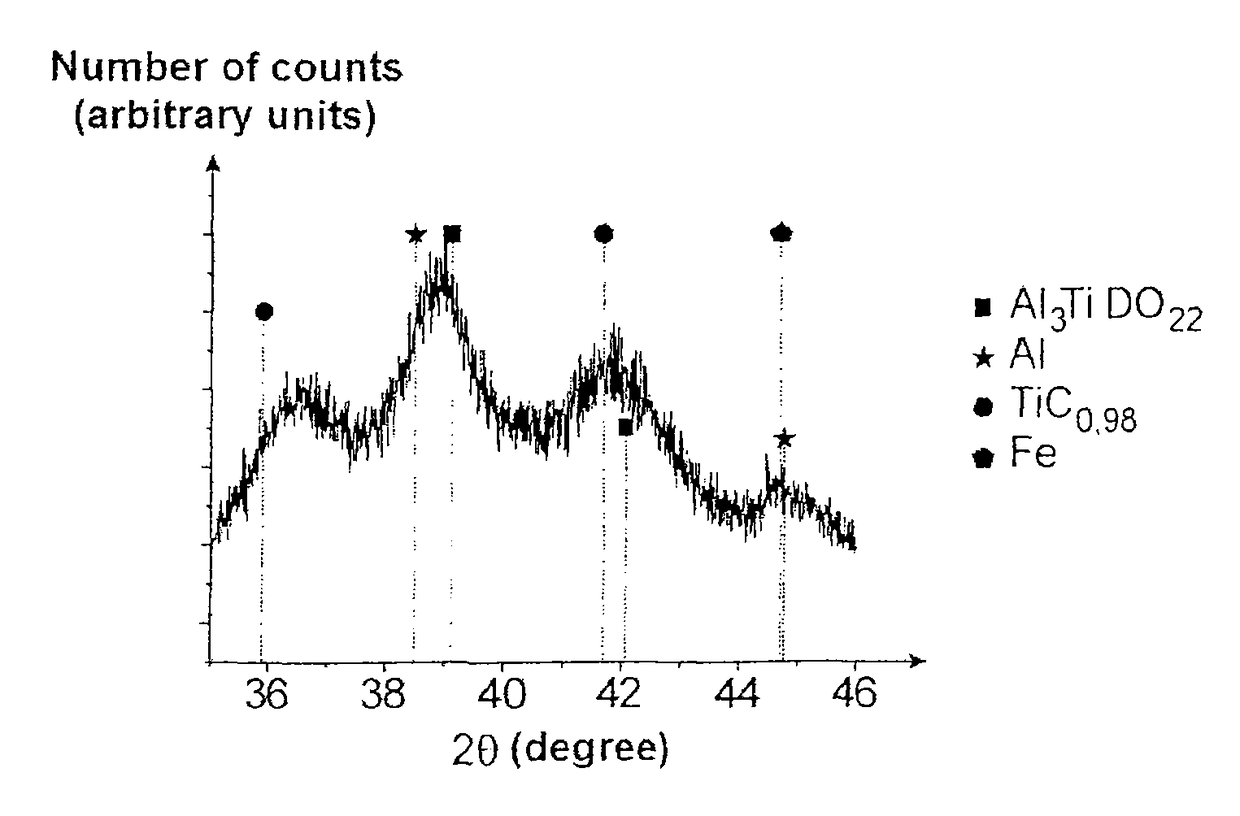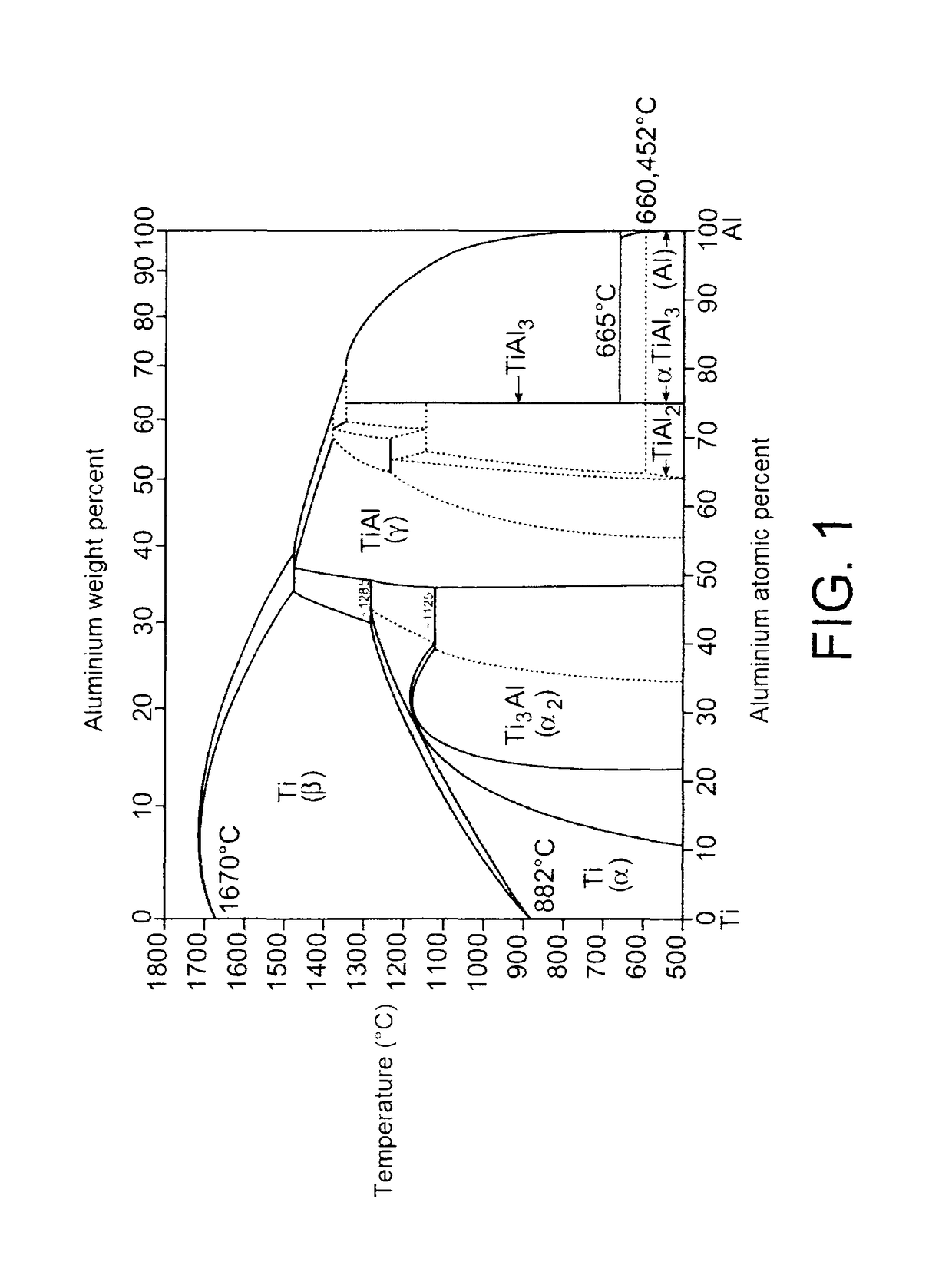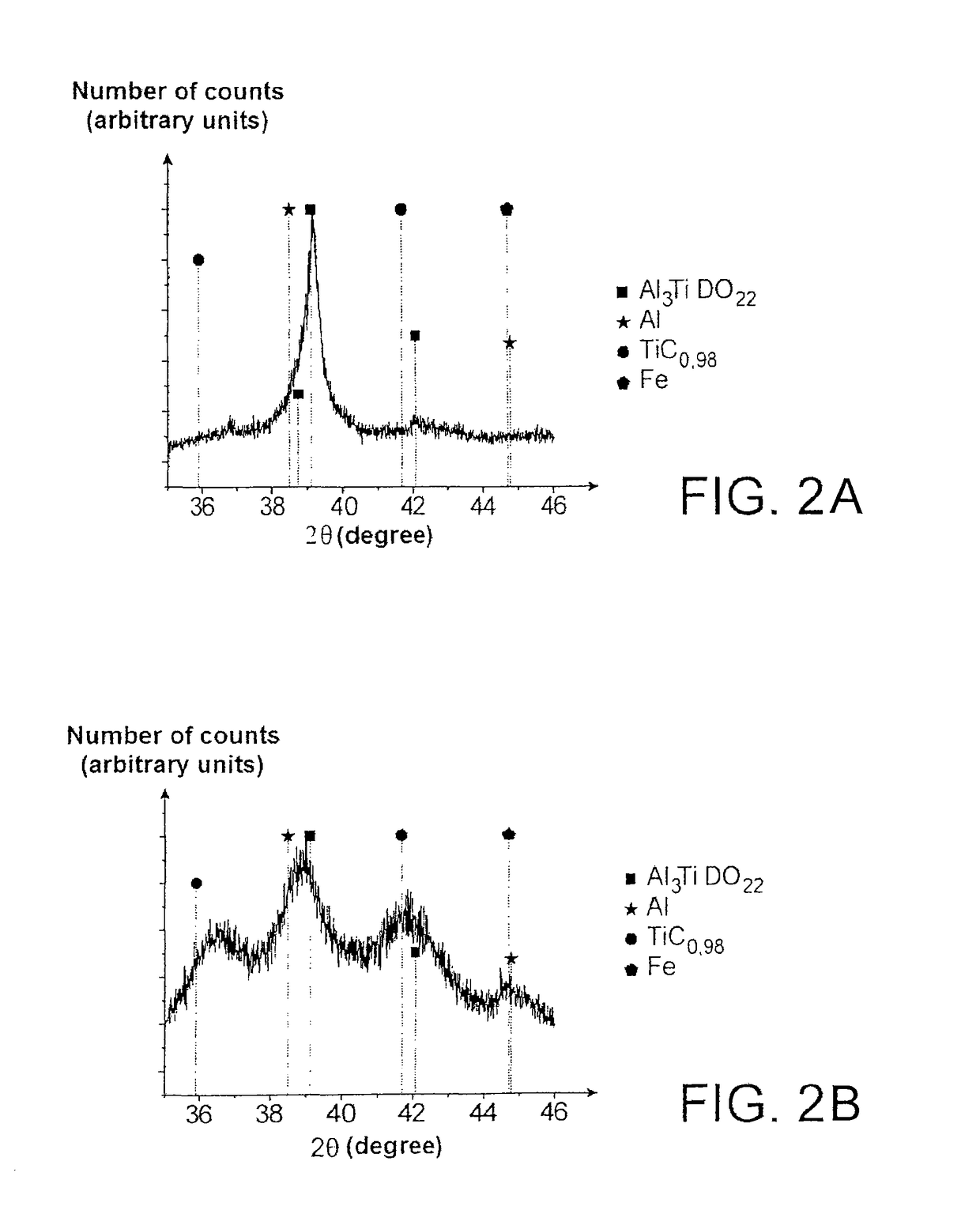Method for producing an Al/TiC nanocomposite material
a nanocomposite material and nanocomposite technology, applied in the field of process for producing an al/tic nanocomposite material, can solve the problems of deterioration of the strength of the majority of industrializable light materials is very low, and the mechanical properties of the mmc materials are not so simple, so as to achieve good thermomechanical properties, reduce the risk of material damage, and reduce the effect of surface roughness
- Summary
- Abstract
- Description
- Claims
- Application Information
AI Technical Summary
Benefits of technology
Problems solved by technology
Method used
Image
Examples
Embodiment Construction
[0052]In order to illustrate the process object of the invention, the steps to follow for making an Al / TiC nanocomposite material will now be described in detail.
[0053]According to the invention, the nanocomposite material is obtained according to the following reaction:
Al3Ti(s)+C(s)→TiC(s)+3 Al(l)
[0054]This reaction corresponds to the reaction (5) as mentioned by Nukami and Flemings in document [1]. The reaction (4) as mentioned in this document allows, in theory, to achieve an Al / TiC composite too.
[0055]Thermodynamic calculations show that the reaction (4) is easily made from 777° C. (1,050 K), whereas the reaction (5) is possible irrespective of the temperature.
[0056]Therefore, it appears that the Al / TiC composite can be manufactured in different ways according to different reaction pathways. It also appears that the reaction (5) could be quite feasible by high energy milling.
[0057]However, although milling can result in the nearly full formation of an Al / TiC composite according...
PUM
| Property | Measurement | Unit |
|---|---|---|
| temperature | aaaaa | aaaaa |
| temperature | aaaaa | aaaaa |
| temperature | aaaaa | aaaaa |
Abstract
Description
Claims
Application Information
 Login to View More
Login to View More - R&D
- Intellectual Property
- Life Sciences
- Materials
- Tech Scout
- Unparalleled Data Quality
- Higher Quality Content
- 60% Fewer Hallucinations
Browse by: Latest US Patents, China's latest patents, Technical Efficacy Thesaurus, Application Domain, Technology Topic, Popular Technical Reports.
© 2025 PatSnap. All rights reserved.Legal|Privacy policy|Modern Slavery Act Transparency Statement|Sitemap|About US| Contact US: help@patsnap.com



